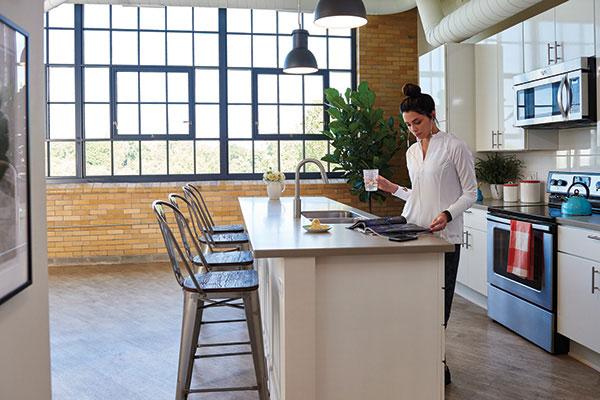1. Kitchen Faucet

The kitchen is truly the heart of the home, which means the kitchen faucet sees a lot of wear and tear. Make sure to check the faucet aerators and under cabinet pipes for leaks. While you're at it, inspect the caulk around the kitchen sink for any deterioration and or discoloration.
Kitchen faucets instantly add polish to the room, and the weeks in between closing and move-in are a great time to make this simple upgrade to get the faucet that best fits your lifestyle.
2. The Age of the Water Heater
Water heaters last for a good while (7-10 years on average), so they're significant investments for the home. The cost to replace a water heater averages around $900, but can be up to $3,000 if you decide to opt for a tankless system. During the home inspection, ask the inspector to estimate the age of the unit and check for any leaks.
3. Septic or Sewer?
As a homeowner, it's important to know critical information about the house itself, such as whether it connects to a septic tank or the main sewer line. It may not be easy to spot the condition of these home items because they're underground, but it's important to inspect these elements—a clog in the main sewer line (or rupture) can be very expensive to fix. Sewer line repairs and replacements cost an average $2,885 for homeowners. Septic tanks are even more expensive and can cost homeowners between $2,000-$7,000 to repair or replace.
It's also messy to replace as they'll have to dig up yard to get to the line or tank itself. Unfortunately, if the sewer line or septic tank need replacing, it could be a potential deal breaker.
4. Toilets

It can be difficult to spot toilet leaks with the naked eye, so have the inspector investigate the base of the toilet for any discolorations, movement or if the floor near the toilet seems soft. These are all clues to a leak in the toilet plumbing. Additionally, check all the drains in the bathroom (toilet, sink, and shower/tub) for clogs. While these are not difficult or expensive fixes, when it comes to closing, it is the current owner's responsibility to ensure the home is move-in ready.
5. Bathroom Faucets

It's very simple to check the condition of your potential home's bathroom faucets. (Finally! Something easy to spot!) The inspector will likely run the water to check for any leaks from the bathroom faucet and plumbing underneath. The good news is that even if the faucet leaks, bathroom faucets are some of the easiest to DIY and install yourself. If multiple bathroom faucets leak, it could be worth asking the seller to fix them before you close on the home or to give you a credit at closing.
Upgrades may be inevitable, especially if you are purchasing an older home, but expensive plumbing fixes need to be discussed between buyer and seller before a deal is done. Having proof of any issues from the inspection is critical to ironing out these details before you settle into your new home.